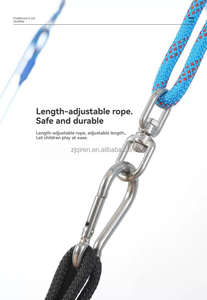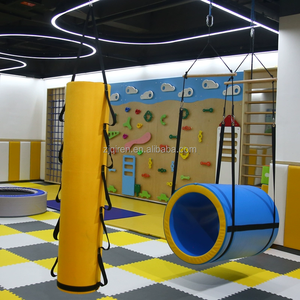Activity Swing: An Overview
The activity swing is a versatile and engaging playground equipment designed to offer children an exhilarating way to enjoy outdoor play. This dynamic apparatus not only provides the classic swinging motion but also incorporates various features that foster physical fitness, balance, and social interaction among kids. Perfect for parks, backyards, and recreational centers, activity swings harmonize fun with developmental benefits, making them an essential component of children's play areas.
Types of Activity Swings
- Standard Swings: These are the traditional swings, typically made of plastic or fabric seats suspended by chains, perfect for classic swinging experiences.
- Bucket Swings: Designed for younger children, these provide a secure seat with higher sides, offering safety and comfort to toddlers.
- Disc Swings: Round and flat in shape, disc swings allow multiple kids to swing together, promoting cooperative play.
- Flat Swings: These swings accommodate several children at once, making them ideal for group play and enhancing social interaction.
- Glider Swings: This design enables kids to swing back and forth together, facilitating teamwork and coordination.
Function, Feature and Design of Activity Swings
Activity swings are designed with specific functionalities in mind to enhance children's play experiences. Key features include:
- Safety Harnesses: Many designs come equipped with safety belts or harnesses that secure the child while swinging, providing peace of mind for caregivers.
- Diverse Materials: Activity swings are often constructed from high-density polyethylene, durable metal frames, or weather-resistant fabrics to withstand the elements.
- Ergonomic Design: Swings are crafted to support the natural posture of children, preventing discomfort while providing adequate support.
- Interactive Features: Some swings include additional elements like music players, visual stimulation, and even sensory elements to enhance play.
- Simple Installation: Most activity swings are designed for easy installation, either as standalone units or as part of larger playsets.
Applications of Activity Swings
The versatility of the activity swing makes it suitable for a variety of environments and uses:
- Home Backyards: Perfect for creating a fun outdoor space where children can play and exercise.
- Parks and Playgrounds: A staple in many public spaces, activity swings promote healthy outdoor activities.
- Schools and Daycares: Used in early childhood settings, they support physical development and social interaction among children.
- Recreational Centers: Activity swings are often installed in family-focused venues to entertain youngsters during visits.
- Therapeutic Use: Certain swings are specially designed for children with special needs, offering therapeutic benefits while ensuring security and comfort.
Advantages of Activity Swings
Investing in an activity swing offers numerous advantages that contribute not only to fun but also to a child's development:
- Physical Development: Swinging builds muscle strength, improves coordination, and enhances gross motor skills.
- Social Skills: Sharing swings encourages cooperative play, negotiation, and team-building among children.
- Cognitive Benefits: Engaging in swinging activities stimulates brain development, enhancing spatial awareness and balance.
- Emotional Regulation: Swinging can be soothing for children, helping to manage emotions while providing a sense of freedom.
- Lasting Enjoyment: Built to endure, high-quality activity swings provide years of enjoyment, supporting a range of childhood activities.






















































